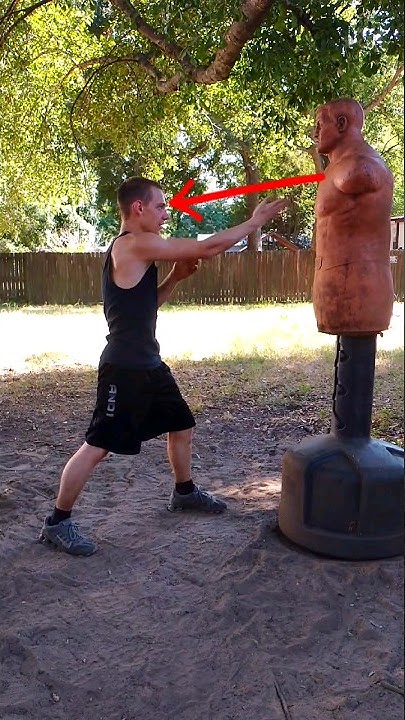How To Fight Someone Stronger Than You At School

The air in the school hallway hangs thick with nervous energy. Lockers slam, echoing the frantic thump-thump of a racing heart. A knot of students huddle, their faces a mixture of fear and morbid curiosity. Word spreads like wildfire: a confrontation is brewing, a showdown between David and, well, a schoolyard Goliath.
Navigating the turbulent waters of schoolyard dynamics can feel like a daunting task, especially when faced with a physically stronger opponent. While avoiding physical altercations is always the primary goal, understanding practical strategies for self-defense and de-escalation becomes crucial when conflict seems unavoidable. This article explores realistic approaches for handling situations where a physical confrontation with a stronger individual appears imminent, emphasizing safety, legal considerations, and long-term solutions.
The playground hierarchy, a constant in the ecosystem of adolescence, often revolves around perceived physical prowess. For generations, schools have been microcosms of larger societal power dynamics, where strength, both real and perceived, can dictate social standing. But times are changing.
There’s been a growing emphasis on conflict resolution skills and anti-bullying initiatives in schools. Zero tolerance policies for violence, though sometimes criticized for being overly rigid, reflect a desire to create a safer environment for all students.
However, the reality remains: sometimes, despite best efforts at prevention, physical confrontations do occur. And when they do, knowing how to protect oneself becomes paramount.
De-escalation: The First Line of Defense
The most effective fight is the one that never happens. De-escalation involves using communication and body language to diffuse tension and avoid physical violence. This requires a conscious effort to remain calm, even when feeling threatened.
Try to maintain a neutral tone of voice. Avoid aggressive postures like clenching fists or invading personal space. Instead, focus on empathy and understanding.
"I understand you're upset," or "Let's talk about this," can be surprisingly effective. Acknowledging the other person's feelings, even if you don't agree with them, can diffuse their anger.
Walking away is always a viable option, and often the smartest one. There is no shame in removing yourself from a potentially dangerous situation. Report the incident to a trusted adult – a teacher, counselor, or administrator – who can intervene and provide support.
Understanding Your Rights and Responsibilities
It is important to understand the legal ramifications of using force, even in self-defense. Laws vary by location, but generally, the use of force must be proportionate to the threat faced. This means you are only justified in using the amount of force necessary to protect yourself from imminent harm.
According to the National Center for Education Statistics (NCES), student victimization rates have generally decreased over the past decade. However, it also notes that specific types of violence, such as bullying, remain a concern. This underscores the need for both preventative measures and effective responses to physical threats.
Self-defense is not about seeking revenge or inflicting harm. It's about protecting yourself from immediate danger. Understanding this distinction is crucial.
Practical Self-Defense Techniques
If de-escalation fails and a physical confrontation becomes unavoidable, knowing basic self-defense techniques can significantly increase your chances of staying safe. Focus on techniques that maximize leverage and target vulnerable areas.
Think eyes, nose, throat, groin, and knees. These are areas where even a smaller person can inflict significant pain and create an opening for escape.
A well-aimed palm strike to the nose, or a kick to the groin, can create the space needed to disengage and run. Consider investing in self-defense classes.
Martial arts like Judo and Aikido emphasize using an opponent's weight and momentum against them. These techniques can be particularly effective against a stronger attacker.
Remember, the goal is not to win a fight, but to survive and escape. Prioritize your safety above all else.
Creating Distance and Using Your Environment
Distance is your friend. Creating space between yourself and your attacker is crucial. Utilize footwork to move away, keeping your hands up to protect your face.
Scan your surroundings for potential weapons or obstacles. A backpack, a book, or even a chair can be used to create distance or disorient your attacker.
Run, yell, and make as much noise as possible to attract attention. A loud scream can deter an attacker and alert others to your situation.
Beyond the Physical: Building Confidence and Assertiveness
True strength isn't just about physical prowess. It's about inner confidence and the ability to assert yourself in a non-violent way. Bullies often target those who appear vulnerable or uncertain.
Practice assertive communication. Make eye contact, speak clearly, and stand tall. Projecting confidence can deter potential aggressors.
Surround yourself with supportive friends and mentors. Having a strong social network can boost your self-esteem and make you less likely to be targeted.
Join a club or activity that interests you. This can help you develop new skills, build confidence, and connect with like-minded individuals.
Remember, you are not alone. Many students struggle with bullying and intimidation. Seeking help is a sign of strength, not weakness.
Long-Term Solutions: Addressing the Root Causes
Addressing the underlying causes of bullying and violence requires a collective effort. Schools need to implement comprehensive anti-bullying programs that focus on prevention, intervention, and support.
These programs should teach students empathy, respect, and conflict resolution skills. They should also provide resources for students who are being bullied or who are exhibiting aggressive behavior.
Parents play a crucial role in fostering a culture of kindness and respect. They should talk to their children about bullying, teach them how to stand up for themselves and others, and model positive behavior.
According to a report by StopBullying.gov, effective anti-bullying programs involve the entire school community, including students, staff, parents, and administrators.
By working together, we can create a safer and more supportive environment for all students.
A Final Thought
Confronting a stronger opponent is a daunting prospect. The best approach is always prevention – de-escalating conflict, seeking help from trusted adults, and building inner confidence. But in situations where physical confrontation seems unavoidable, understanding basic self-defense techniques and strategies for creating distance can be crucial for survival.
Remember, your safety is paramount. Prioritize escape and seek help from trusted adults as soon as possible. Don't be afraid to speak up and advocate for yourself and others. The school hallway, that place of echoing slams and nervous energy, can become a space of support, resilience, and ultimately, safety.


















